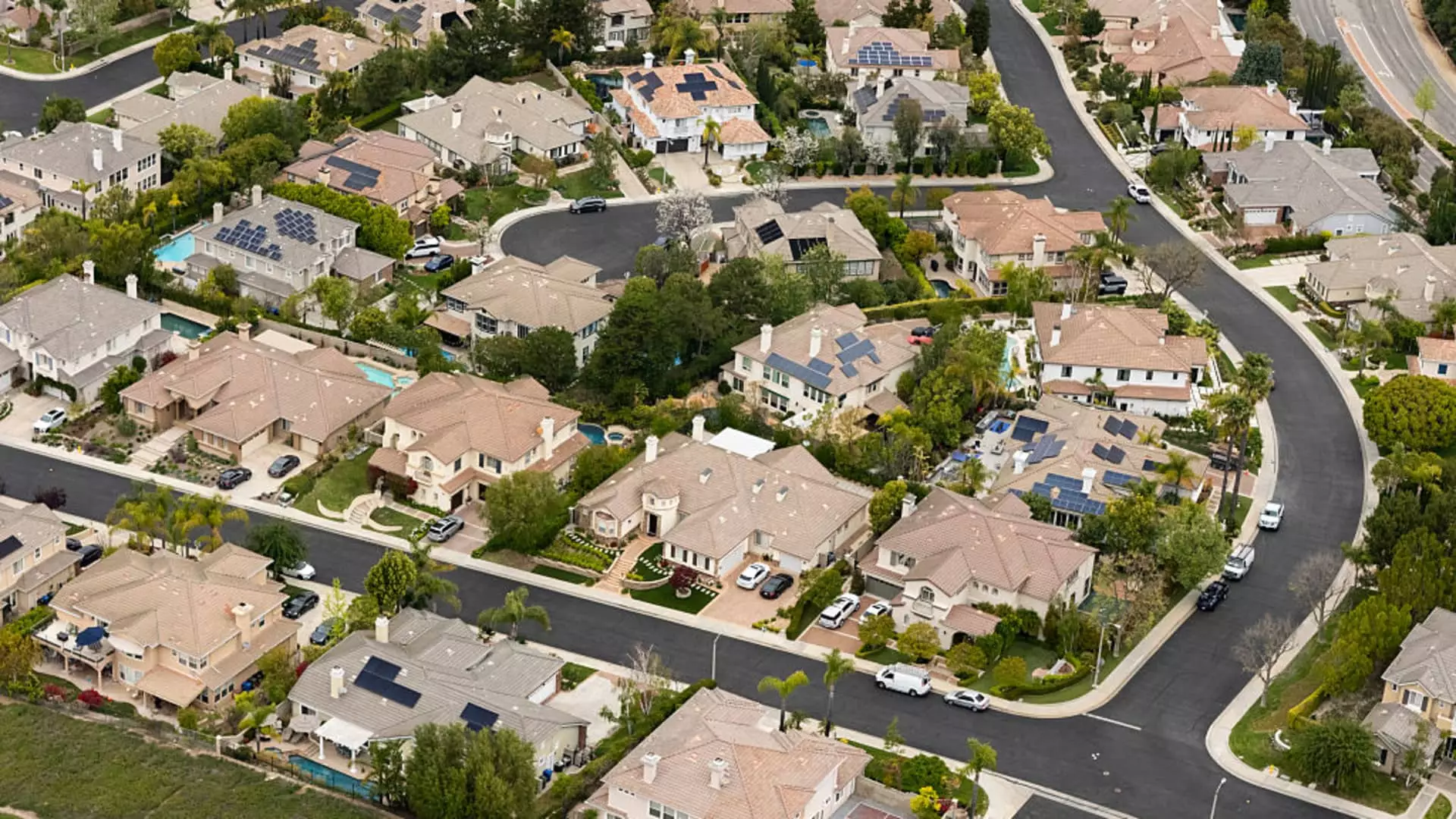As the world continues navigating the aftershocks of the pandemic, the housing market stands as a stark reminder of economic resilience—and its failures. With national prices soaring by an astounding 39% since March 2019, as reported by the S&P CoreLogic Case-Shiller Index, the outcry for affordable housing grows louder. The recent surge in mortgage rates and a continuing supply crunch challenge the foundations of homeownership for middle- and low-income families. Rather than entering a balanced market, we are confined in a bastion of high prices—frequently leaving hard-working individuals and families behind.
The Disparity in Home Affordability
The disparities in home affordability reveal a painful truth in the current housing climate. For households earning between $75,000 and $100,000, only 21.2% of housing listings are affordable, a far cry from the 48.8% accessible in 2019. Housing inventory remains painfully inadequate, especially in desirable urban areas. A report by the National Association of Realtors signifies that roughly 416,000 additional affordable homes would be required to achieve an optimal equilibrium in the housing landscape.
Looking further down the income spectrum, families making less than $75,000 are at even greater risk. With only 8.7% of listings affordable to a household making $50,000, this demographic is caught in a vicious cycle of exclusion, forced to either forfeit their dream of homeownership or strain their finances beyond comfort. Meanwhile, the affluent class efficiently capitalizes on this crisis, having access to over 80% of available listings—essentially a manifestation of wealth inequality magnified by the housing squeeze.
Market Segmentation: Where the Pain is Most Acutely Felt
Delving deeper into the market’s segmentation, it becomes clear that the most desperate pain points lie within the lower and middle tiers, where affordability issues are most pronounced. Data indicates that while some regions like the Midwest and South experience improvements, with an uptick in affordable listings, cities such as Seattle and Washington, D.C. remain entrenched in their struggles. As we count the losses of those squeezed out of certain neighborhoods, an incessant question arises: How can we bring equity to a system that so blatantly favors the wealthy?
The underlying causes of this inequity extend beyond mere price trends. Long-standing zoning laws, decades of underbuilding, and the societal preference for suburban living create roadblocks for would-be homebuyers. These structural issues, combined with an immigration policy that could stifle labor markets critical to construction, further jeopardize an already faltering sector.
The Role of Market Dynamics and Local Policies
The nuances of the market must also be dissected within the context of local policies. The report highlights how various metropolitan areas demonstrate that balanced housing markets are achievable. Cities in the Midwest—think Akron and Pittsburgh—show a harmonious equilibrium between supply and demand. Yet, these successes are not replicated nationwide, underlining a profound disparity in resources and policies governing housing.
While some urban centers see revitalization through effective local policies, others, particularly in Southern California, find themselves entrenched in worsening conditions. The tension between rapid population growth and stagnant housing supply showcases a catastrophic planning failure that could plague the market for years to come.
The Hope for Change Amidst Adversity
Despite the bleak landscape, sparks of hope flicker within policy discussions and marketplace adaptability. The potential for introducing new construction should not go unnoticed as a viable solution. With smart, flexible policies that consider the needs of diverse income levels, we might witness a shift towards affordable housing becoming a feasible reality for more families.
Market fluctuations suggest that even cities that once experienced unprecedented hotspots, like Austin and San Francisco, might begin to stabilize, with increased supply catering to the demand for affordable homes. As the narrative shifts, providing an insulating policy environment could yield a more equitable housing market.
Nonetheless, one cannot ignore the stark realities that persist. As we gaze into the future of the housing market, a reckoning is essential. The ongoing tussle between income levels, affordability, and availability must yield a new framework—one that broadens the spectrum of homeownership and mitigates the distress of so many families yearning for stability in an uncertain world. The future demands more than a mere acknowledgment of the issues at hand; it requires decisive action that aligns with the principle of equitable opportunity.

